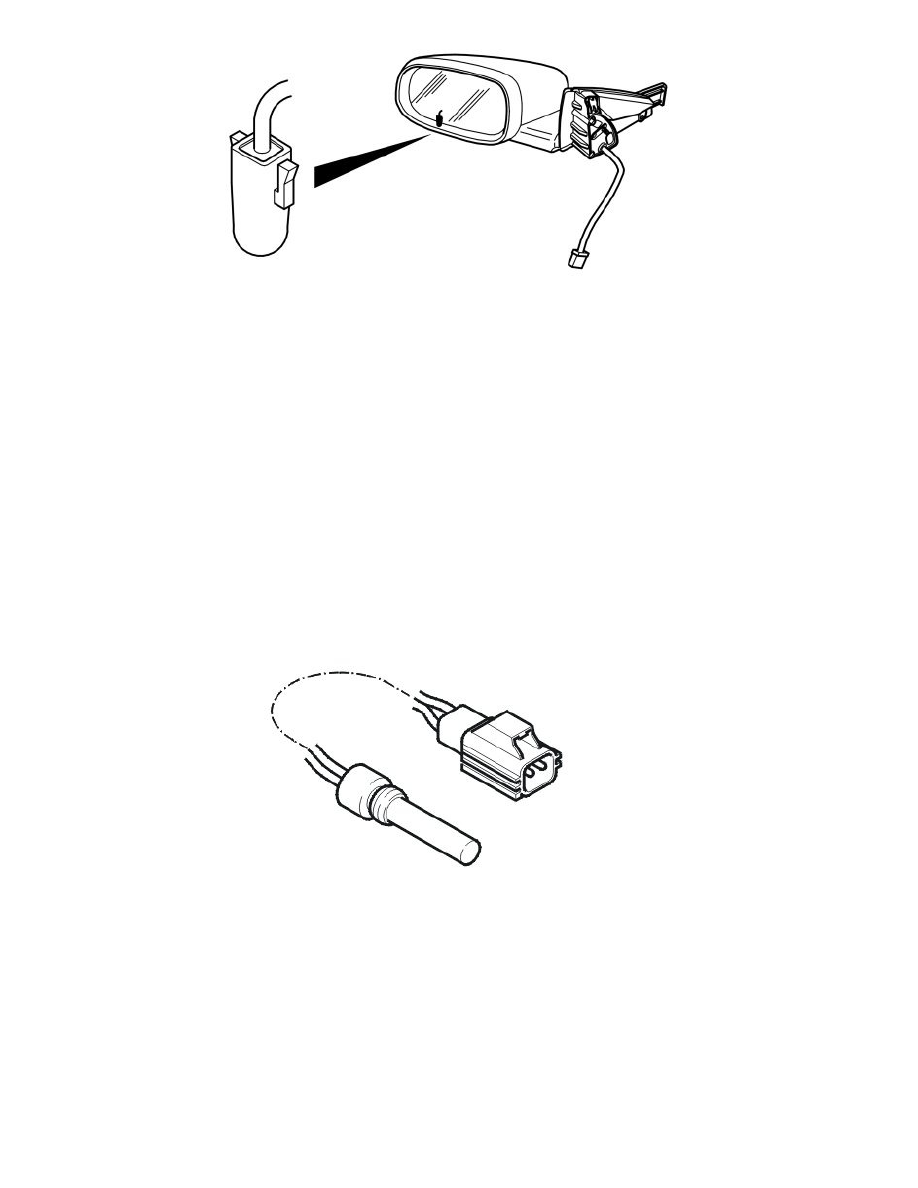S80 AWD V8-4.4L VIN 85 B8444S (2008)

The function of the outside temperature sensor is to detect the vehicle's ambient temperature. The ambient temperature is required so that the engine
control module (ECM) can regulate, among other things:
-
the engine cooling fan (FC)
-
the air conditioning (A/C) compressor's displacement.
The ambient temperature is also used as a substitute value in the event of a fault in certain components or functions and to control certain diagnostic
functions.
The engine control module (ECM) supplies other control modules with the current outside temperature by transmitting information on the controller area
network (CAN).
The temperature sensor is a resistor with a negative temperature coefficient, so called NTC type. It is supplied with power from the control module.
The resistance in the sensor changes according to the ambient temperature of the vehicle. This provides the engine control module (ECM) with a signal
of between 0-5 V. Low temperature results in high resistance (high voltage). High temperature results in low resistance (low voltage).
The outside temperature sensor is positioned in the left door mirror.
The engine control module (ECM) can diagnose the outside temperature sensor. The sensor value can be read off using the diagnostic tool.
Part 2
Design (Continued)
Engine coolant level sensor
The function of the engine coolant level sensor is to alert the driver if the engine coolant level in the expansion tank is too low.
The sensor is a magnetic reed switch, which is enclosed in a pipe on the bottom of the expansion tank. Around the pipe, on the inside of the expansion
tank is a float. This float contains a magnet. When the engine coolant level is above minimum, the float is too high in the tank to affect the switch.
However if the engine coolant level falls below the minimum level, the magnetic field acts on the switch.
The sensor is supplied with voltage (signal) from the engine control module (ECM) and grounded in the body. When the engine coolant level in the
expansion tank is over a certain level the circuit closes, which produces a low signal. When the engine coolant level is below a certain level the circuit is
opened by the engine coolant level sensor, which produces a high signal. When the engine control module (ECM) detects a high signal the information
about low engine coolant level is transmitted via the Controller area network (CAN) to the driver information module (DIM), which warns the driver.
Note! There are no functions controlled by the engine which are directly connected to the low coolant level warning lamp. The Engine Control
Module (ECM) only transfers the signal which is used by the Driver Information Module (DIM).
The engine control module (ECM) cannot diagnose the engine coolant level sensor.
